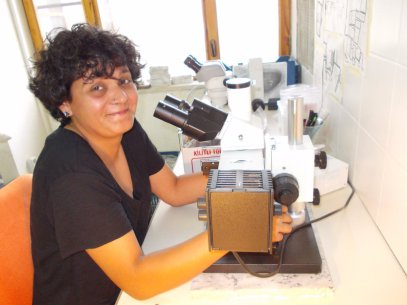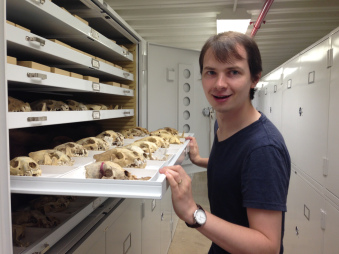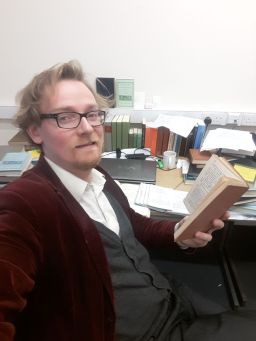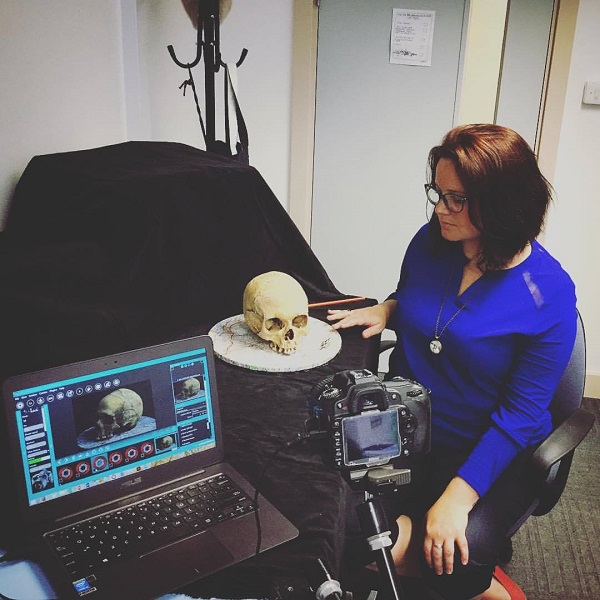
This year we had a number of researchers land prestigious grants for their interesting and important work at ACE. Among these researchers, we have a few new postdocs who have written a brief introduction to the research they will be undertaking at ACE!
Dr. Ceren Kabukcu
I am an archaeobotanist working on Palaeolithic-Neolithic botanical assemblages from Southwest Asia. My Leverhulme ECF project involves the analysis of wood charcoal and seed macroremains from four sites (Shanidar, Palegawra, Karain and Gusir Hoyuk) located along the Taurus-Zagros mountain ranges, dated between ~45,000-10,7000 years ago. Plant foods and wood fuel were essential for the survival and adaptation of our ancestors to changing environments. However, the nature of Palaeolithic plant management practices and their interplay with global climate change remain poorly understood.
With my research, I seek to understand how people tended and managed plants before the advent of farming, by investigating the changing ecologies of pre-agricultural plant-use and how they gave rise to new anthropogenic environments associated with early cultivation. For example, I have been studying the wood anatomy of almond charcoals from the sites included in her Leverhulme ECF project looking for changes in wild almond growth conditions through time. The concurrent investigation of charred almond nutshell fragments in these assemblages will also permit me to detect any changes in kernel sizes or gathering preferences for certain species groups (e.g., those with grooved or pitted nutshell).
Dr. Ardern Hulme-Beaman
I’m working on understanding the relationship humans have held with canids in the past by looking at the present. A favoured hypothesis for how dogs were domesticated is that they went through a commensal phase (commensalism is when animal scavenges the waste and refuse of another without directly or deliberately causing harm, but the species creating the waste doesn’t benefit from this behaviour). We often assume that urban foxes and commensalism in other canids is a relatively modern phenomenon and one we don’t see in archaeology, but this might simply be that once dogs were domesticated they excluded other commensal canids. As a result, to understand this commensal process, the competition for human waste and how we might identify it in the past it is necessary to look at it in modern contexts.
I am primarily looking at the parts of the skeleton that will indicate a change in diet that would be associated with eating human refuse, so the mandible, and teeth. I hope to try to understand the morphology and reveal what the morphology of the jaw bones might tell us about how the animal manipulated food and how hard the food was. I’ll look at a wild-rural-urban gradient of foxes for such signals to see if I can find changes between populations that might then be tracked in archaeological foxes and also in dogs.
Dr. Ben Cartlidge
I’m Ben, and I’ve just moved to Liverpool from Oxford, where I studied Classics (BA) and Linguistics (DPhil), with a masters in Germany in the middle. My doctoral thesis was about the contribution of ancient Greek comic texts to the linguistic history of Greek. I was looking at texts by the playwright Menander (c. 340-290 B.C.) for evidence of change in phonology, morphology and syntax (roughly: the sounds, the forms of words, and the sentence structures). This work will form the basis of my first book, which I am finishing now. I still research aspects of Greek linguistics; currently I’m beginning work on an article about the history of Greek prosody. I like learning new languages and finding out about their history.
My new project is a literary study of a text called ‘The Deipnosophists’ (‘Dinner-Experts’) by Athenaeus, who lived in Egypt in the 3rd c. A.D. This is a dialogue between a group of intellectuals at dinner; as they eat and drink, they quote lots of early literary texts (including Menander!). Some of these texts are familiar to us – Homer’s Iliad and Odyssey for example; but others have been lost, and so Athenaeus represents a unique window on ancient literature and literary culture. My project uses narratological and cognitive approaches to analyse in greater depth Athenaeus’ strategies in composing the work.
Dr. Kimberly Plomp
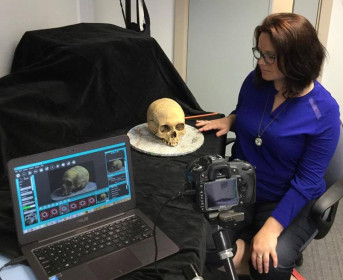
My research focuses on human skeletal anatomy and variation, palaeopathology, and evolutionary medicine. Specifically, I use shape analysis techniques (geometric morphometrics) to investigate skeletal variation of both human and non-human primates. I have recently been awarded a Marie Skłodowska-Curie Individual Fellowship for my project entitled IPACE – Iceland: Physical Anthropology of Colonization and Evolution.
After the initial settlement of Iceland, which occurred between the 9th and 10th centuries, the population is thought to have been largely genetically isolated until the 20th century. Therefore, Iceland represents a unique opportunity to investigate how migration to a new environment and genetic isolation influence human morphological variation. It has been suggested that the colonisers of Iceland were of both Scandinavian and Irish descent. However, the accuracy of these hypotheses is debated, so the composition of the initial Icelandic population remains unclear. This leaves a major question regarding the settlement of Iceland unanswered—where did the people who colonized Iceland come from? Did they come from Scandinavia and Ireland or just Scandinavia?
My research seeks to answer this question, as well as investigate how the morphological diversity of the Icelandic population change in response to the post-10th century isolation, climate change, and alterations in diet? To address these questions, I will apply three-dimensional (3D) geometric morphometric techniques to crania of Icelandic archaeological populations, as well as crania of individuals from the two proposed colonizing populations – i.e. Late Iron Age Scandinavians and Medieval Irish. I will explore cranial shape variation to identify relationships between populations and to ascertain how Icelandic skeletal variation changed after settlement. I hope that the findings will enhance our understanding of early European migrations, as well as provide new insight into how genetic isolation, the adoption of a new diet, and climate change influenced Icelandic skeletal diversity.
Discover more
Study an ACE subject at the University of Liverpool
If you would like to tell ACE and our followers about your research, please email kaplomp@liverpool.ac.uk!
